GSKill TridentZ 3466Mhz CL16 DDR4 Dual Channel Memory Review
Author: Dennis GarciaBenchmarks - Synthetic
MSI Z170A Gaming M7 – Z170 Chipset
Intel Core i5 6600K (3.5Ghz) Quad Core 4 x 256KB L2 Cache 6MB L3 Cache
Thermaltake Water 2.0 Performer
1x nVidia GTX 980Ti
Micron C300 128GB SSD
HP dvd1260i Multiformat 24x Writer
Thermaltake Toughpower Grand 1050 Watt PSU
Windows 7 Ultimate 64bit SP1
Memory Tested
2x GSKill TridentZ PC4-27700 8GB DDR4 (16-18-18-38)
Reference Memory
2x Corsair Vengeance LPX PC4-21300 8GB DDR4 (15-17-17-35)
2x HyperX Predator PC4-24000 8GB DDR4 (15-16-16-39)
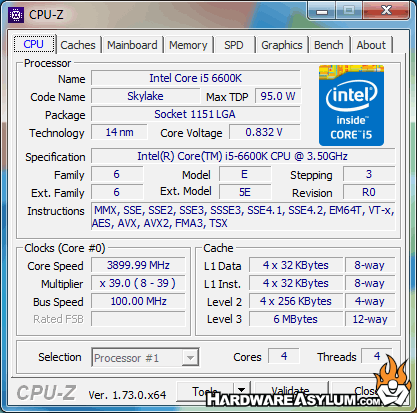
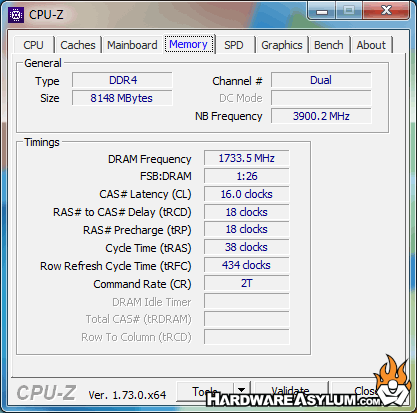
Sandra is a software collection of synthetic benchmarks that will give us a basic idea as to what a system is capable of. It should be noted that SiSoft numbers can change depending on what hardware is being tested. These were recorded using Sandra Professional Version 21.15.2015.1
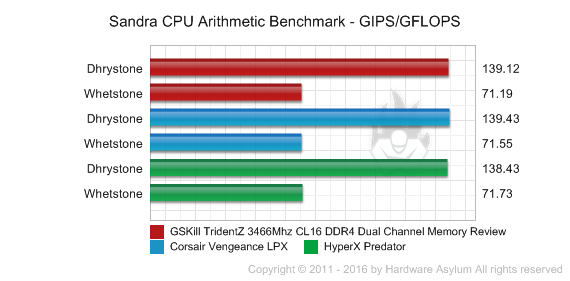
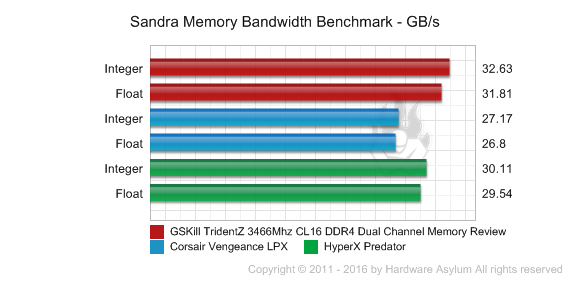
AIDA64 Extreme Edition is a streamlined diagnostic and benchmarking software package designed to assist with overclocking and general system tuning. The package also contains modules to assess the performance of the processor, system memory, and disk drives in addition to normal stuff like stress testing and troubleshooting.
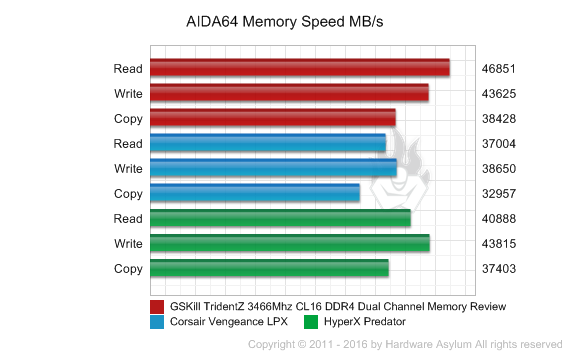
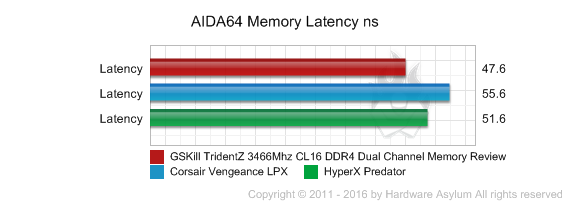
Unigine is a synthetic benchmark much like 3DMark Vantage, but supports the newest of DirectX 11 technologies. The benchmark comes with lots of heavy tessellation and soft shadows to work the more flexible shaders found on DirectX 11 graphic cards. This makes this benchmark ideal for seeing exactly what a best case scenario might look like for a DirectX 11 capable GPU.
Benchmark Settings
HWBot Benchmark
DirectX 11 Presets
DirectX 9 Presets
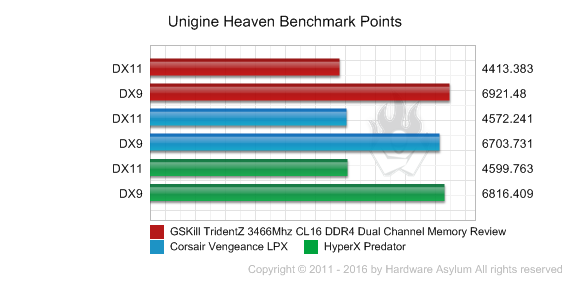
PCMark 8 is an overall system benchmark to measure and compare PC performance using real-world tasks and applications. There are six individual testing scenarios using applications that reflect typical PC use in the home and at the office. This approach ensures that PCMark measures the things that matter, highlighting performance differences that will be apparent to end users and consumers.
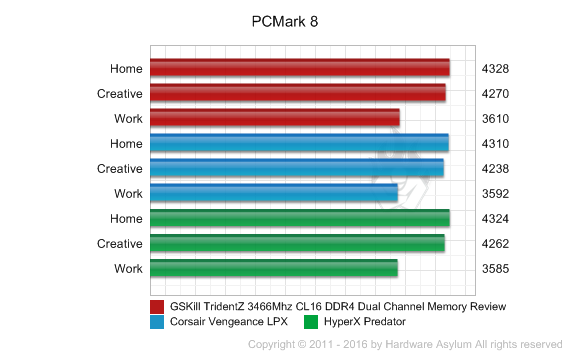
When you are dealing with high performance memory modules there is very little that separates them in terms of overall performance. The charts above reflect the performance numbers between three dual channel memory kits and their XMP profiles. The synthetic benchmark numbers reflect what you would expect, faster memory higher numbers. The surprise comes when we look at some of the real-world benchmarks and video benchmark.
Overall the difference between the modules is quite small which is to be expected with high performance memory. Unigine showed a gain on DX9 performance while DX11 remained the same. PCMark 8 was a real suprise with only a few points seperating the different systems. Really this is to be expected since that benchmark tests everything from CPU to Storage with very light weight placed on memory bandwidth. Still with that being the case the GSKill TridentZ modules proved to be the fastest of the bunch.

